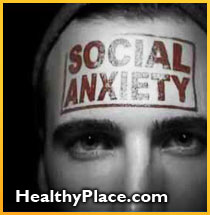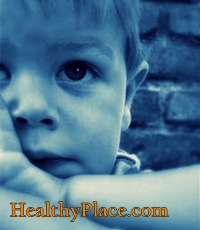Researchers conclude that lithium maintenance provides a sustained protective effect against suicidal behavior in manic-depressive disorders, a benefit that has not been shown with any other medical treatment.
Can timely diagnosis and treatment of depression reduce the risk of suicide? Studies of treatment effects on mortality in major mood disorders remain rare and are widely considered difficult to carry out ethically. Despite close associations of suicide with major affective disorders and related comorbidity, the available evidence is inconclusive regarding for sustained reductions of suicide risk by most mood-altering treatments, including antidepressants. Studies designed to evaluate clinical benefits of mood-stabilizing treatments in bipolar disorders, however, provide comparisons of suicidal rates with and without treatment or under different treatment conditions. This emerging body of research provides consistent evidence of reduced rates of suicides and attempts during long-term treatment with lithium. This effect may not generalize to proposed alternatives, particularly carbamazepine. Our recent international collaborative studies found compelling evidence for prolonged reduction of suicidal risks during treatment with lithium, as well as sharp increases soon after its discontinuation, all in close association with depressive recurrences. Depression was markedly reduced, and suicide attempts were less frequent, when lithium was discontinued gradually. These findings indicate that studies of the effects of long-term treatment on suicide risk are feasible and that more timely diagnosis and treatment for all forms of major depression, but particularly for bipolar depression, should further reduce suicide risk.
INTRODUCTION
Risk of premature mortality significantly increases in bipolar manic-depressive disorders.(1-12) Mortal risk arises from very high rates of suicide in all major affective disorders, which are at least as great in bipolar illness as in recurrent major depression.(1, 2, 13-16) A review of 30 studies of bipolar disorder patients found that 19% of deaths (range in studies from 6% to 60%) were due to suicide.(2) Rates may be lower in never-hospitalized patients, however.(6, 11, 12) In addition to suicide, mortality is probably also increased due to comorbid, stress-related, medical disorders, including cardiovascular and pulmonary diseases. (3-5, 7, 10) High rates of comorbid substance use disorders contribute further to both medical mortality and to suicidal risk (11, 17), especially in young persons (18), in whom violence and suicide are leading causes of death.(11, 12, 19)
 Suicide is strongly associated with concurrent depression in all forms of the common major affective disorders.(2, 9, 20, 21) Lifetime morbid risk for major depression may be as high as 10%, and lifetime prevalence of bipolar disorders probably exceeds 2% of the general population if cases of type II bipolar syndrome (depression with hypomania) are included. (2, 22, 23) Remarkably, however, only a minority of persons affected with these highly prevalent, often lethal, but usually treatable major affective disorders receive appropriate diagnosis and treatment, and often only after years of delay or partial treatment. (8 ,9, 22, 24-28) Despite grave clinical, social, and economic effects of suicide, and its very common association with mood disorders, specific studies on the effects of mood-altering treatments on suicidal risk remain remarkably uncommon and inadequate to guide either rational clinical practice or sound public health policy.(7, 8, 11, 12, 22, 29, 30)
Suicide is strongly associated with concurrent depression in all forms of the common major affective disorders.(2, 9, 20, 21) Lifetime morbid risk for major depression may be as high as 10%, and lifetime prevalence of bipolar disorders probably exceeds 2% of the general population if cases of type II bipolar syndrome (depression with hypomania) are included. (2, 22, 23) Remarkably, however, only a minority of persons affected with these highly prevalent, often lethal, but usually treatable major affective disorders receive appropriate diagnosis and treatment, and often only after years of delay or partial treatment. (8 ,9, 22, 24-28) Despite grave clinical, social, and economic effects of suicide, and its very common association with mood disorders, specific studies on the effects of mood-altering treatments on suicidal risk remain remarkably uncommon and inadequate to guide either rational clinical practice or sound public health policy.(7, 8, 11, 12, 22, 29, 30)
In view of the clinical and public health importance of suicide in manic-depressive disorders, and the rarity of evidence proving that modern mood-altering treatments reduce suicide rates, an emerging body of research has been reviewed. It indicates a significant, sustained, and possibly unique reduction of suicidal behavior during long-term treatment with lithium salts. These important effects have not been demonstrated with other mood-altering treatments.
THERAPEUTICS RESEARCH IN SUICIDE
Despite broad clinical use and intensive study of antidepressants for four decades, evidence that they specifically alter suicidal behavior or reduce long-term suicidal risk remains meager and inconclusive.(9, 11, 17, 31-37) The introduction of selective serotonin reuptake inhibitors (SSRIs) and other modern antidepressants that are much less toxic on acute overdose than older drugs appears not to have been associated with a decrease in suicide rates.(34, 38) Instead, their introduction may have been associated with a shift toward more lethal means of self-destruction.(39) We found only one report of a significantly lower rate of suicide in depressed patients treated with antidepressants compared to placebo (0.65% vs 2.78% per year), with an even lower rate with an SSRI than with other antidepressants (0.50% vs 1.38% per year).(37) Nevertheless, suicide rates during antidepressant treatment in that study were far greater than the general population rate of 0.010% to 0.015% per year, uncorrected for persons with mood disorders and other illnesses associated with increased suicide rates.(40)
Bipolar depression accounts for much or most of the time one is stricken with bipolar disorder (24) and can be disabling or fatal.(2, 7, 11, 12) Remarkably, however, the treatment of this syndrome remains much less studied than depressive to manic, agitated or psychotic unipolar major depression.(24, 38, 41) Indeed, bipolarity is typically a criterion for exclusion from studies of antidepressant treatment, apparently to avoid risks of switching from depressive to manic, agitated or psychotic phases when patients are not protected with lithium or another mood-stabilizing agent.(38)
Reasons for the rarity of studies of the effects of modern psychiatric treatments on suicide rates are not entirely clear. Therapeutic research on suicide is appropriately constrained ethically when fatality is a potential outcome, and particularly when discontinuation of ongoing treatment is required in a research protocol. Treatment discontinuation is increasingly recognized as being followed by at least temporary, sharp increases in morbidity that may exceed the morbid risk associated with untreated illness. This evidently iatrogenic phenomenon has been associated with discontinuation of maintenance treatment with lithium (42-46), anti-depressants (47), and other psychotropic agents.(44, 48) Mortality can also increase following treatment discontinuation. (9, 11, 21, 22) Such reactions can complicate clinical management. Moreover, they may also confound many research findings in that typically reported "drug vs. placebo" comparisons may not represent straightforward contrasts of treated vs untreated subjects when placebo conditions represent discontinuation of an ongoing treatment.
Avoiding such risks, most studies of treatment effects on suicide have been naturalistic or have examined suicidal behavior post-hoc as an unintended outcome of controlled treatment trials. Such studies have provided evidence that maintenance treatment with lithium is associated with a strong, and possibly unique, protective effect against suicidal behavior in major affective disorders, and particularly in bipolar syndromes. (6, 8, 11, 12, 21, 22, 49-56) Moreover, lithium's protective effect may extend more broadly to all causes of mortality in these disorders, although this possibility remains much less studied. (2, 3, 5, 7)
SUICIDE RATES ON AND OFF LITHIUM
We recently evaluated all available studies of lithium and suicide since the emergence of long-term lithium maintenance treatment in manic depressive disorders in the early 1970s. Studies were identified by computerized literature searches and cross-referencing from publications on the topic, as well as by discussing the aims of the study with colleagues who have conducted research on lithium treatment or who may have had access to unpublished data on suicide rates in bipolar disorder patients. We sought data permitting estimates of rates of attempted or completed suicides in bipolar patients or mixed samples of patients with major affective disorders that included bipolar manic-depressives. Suicide rates during maintenance lithium treatment were compared with rates after discontinuation of lithium or in similar untreated samples when such data were available.
Suicide rates during long-term lithium treatment were determined for each study, and, when available, rates for patients discontinued from lithium or for comparable patients not treated with a mood stabilizer were also determined. Suicide rates during lithium treatment were not significantly greater with larger numbers of subjects or longer follow-up. However, many of the available reports were flawed in one or more respects. Limitations included: (1) a common lack of control over treatments other than lithium; (2) incomplete separation by diagnosis or provision of separate rates for suicide attempts and completions in some studies; (3) a lack of comparisons of treated and untreated periods within subjects or between groups; (4) study of fewer than 50 subjects/treatment conditions despite the relatively low frequency of suicide; (5) inconsistent or imprecise reporting of time-at-risk (the amount of time the patient was absent); and (6) selection of patients with previous suicide attempts that may show bias toward increased suicide rates in some studies. Some of these deficiencies were resolved by contacting authors directly. Despite their limitations, we believe that the available data are of sufficient quality and importance to encourage further evaluation.
Table 1 summarizes available data concerning rates of suicides and attempts among manic-depressive patients on or off lithium, based on previously reported (6) and new, unpublished meta-analyses. The results indicate an overall reduction of risk by nearly seven fold, from 1.78 to 0.26 suicide attempts and suicides per 100 patient-years at risk (or percent of persons/year). In another more recent, quantitative meta-analysis (L.T., unpublished, 1999), we evaluated fatality rates ascribed to suicide in the same studies as well as in additional previously unreported data kindly provided by international collaborators. In the latter analysis, based on results from 18 studies and more than 5,900 manic-depressive subjects, we found a similar reduction of risk from a suicide rate averaging 1.83 ± 0.26 suicides per 100 patient-years in patients not treated with lithium (either after discontinuing or in parallel groups not given lithium) to 0.26 ± 0.11 suicides per 100 patient-years in patients on lithium.
IMPLICATIONS OF FINDINGS
The present findings derived from the research literature on lithium and suicide risk indicate substantial protection against suicide attempts and fatalities during long-term lithium treatment in patients with bipolar manic-depressive disorders, or in mixed groups of major affective disorder subjects that included bipolar patients. While this evidence is strong and consistent overall, the relative infrequency of suicide and limited size of many studies required pooling of data to observe statistically significant effect that was not found in several individual studies. Large samples and lengthy times-at-risk, or pooling of data across studies, are likely to be required in future studies of treatment effects on suicide rates.
It is also important to emphasize that the observed, pooled, residual risk of suicides while on lithium, though much lower than without lithium treatment, is still large, and greatly exceeds general population rates. The average suicide rate during lithium maintenance treatment, at 0.26% per year (Table 1), is more than 20 times greater than the annual general population rate of about 0.010% to 0.015%, which also includes suicides associated with psychiatric illnesses.(11, 40) The evidently incomplete protection against suicide associated with lithium treatment may reflect limitations in the effectiveness of the treatment itself and, very likely, potential noncompliance to long-term maintenance therapy.
Since suicidal behavior is closely associated with concurrent depressive or dysphoric mixed states in bipolar disorder patients (9, 11, 20), it is likely that residual risk for suicide is associated with incomplete protection against recurrences of bipolar depressive or mixed mood states. Lithium has traditionally been considered to provide better protection against mania than against bipolar depression.(27, 38) In a recent study of more than 300 bipolar I and II subjects, we found that depressive morbidity was reduced from 0.85 to 0.41 episodes per year (a 52% improvement) and time ill was reduced from 24.3% to 10.6% (a 56% reduction) before vs during lithium maintenance treatment.(23) Improvements in mania or hypomania were somewhat larger, at 70% for episode rates and 66% for percentage of time manic, with even greater improvement in hypomania in type 11 cases (84% fewer episodes and 80% less time hypomanic). Corresponding suicide rates fell from 2.3 to 0.36 suicide attempts per 100 patient-years (an 85% improvement) during vs before lithium maintenance treatment. (9, 20) The present findings indicate an 85% to crude sparing of completed suicides and attempts (1.78 to 0.26% per year; see Table 1). These comparisons suggest that protective effects of lithium rank: suicide attempts or suicides ³ hypomania>mania>bipolar depression. Since suicide is closely associated with depression (11, 20), it follows that better protection against bipolar depression must be a key to limiting suicidal risk in bipolar disorders.
It is not clear whether reduction of suicide rates during lithium maintenance reflects simply the mood-stabilizing effect of lithium, or if other properties of lithium also contribute. In addition to protection from recurrences of bipolar depressive and mixed-mood states closely associated with suicidal behavior, important associated benefits of lithium treatment possibly also contribute to reduction of suicide risk. These may include improvements in overall emotional stability, interpersonal relationships and sustained clinical follow-up, vocational functioning, self-esteem, and perhaps reduced comorbid substance abuse.
An alternative possibility is that lithium may have a distinct psychobiological action on suicidal and perhaps other aggressive behaviors, possibly reflecting serotonin-enhancing actions of lithium in limbic forebrain. (38, 57) This hypothesis accords with growing evidence of an association between cerebral deficiency of serotonin functioning and suicidal or other aggressive behaviors. (58-59) If lithium protects against suicide through its central serotonergic activity, then proposed alternatives to lithium with dissimilar pharmacodynamics may not be equally protective against suicide. Specifically, mood-stabilizing agents that lack serotonin enhancing properties, including most anti-convulsants (27, 38), might not protect against suicide as well as lithium. It would be unwise clinically to assume that all putative mood-stabilizing agents provide similar protection against suicide or other impulsive or dangerous behaviors.
For example, findings from recent reports from a multicenter European collaborative study challenge the assumption that all effective mood-altering treatments have a similar impact on suicide rates. This study found no suicidal acts among bipolar and schizoaffective disorder patients maintained on lithium, whereas carbamazepine treatment was associated with a significantly higher rate of suicides and suicide attempts in 1% to 2% of subjects per year-at-risk. (60, 61) Patients assigned to carbamazepine had not been discontinued from lithium (B. Müller-Oerlinghausen, written communication, May 1997), which might otherwise have increased risk iatrogerically. (8, 42-46) A similar rate of suicide attempts to that found with carbamazepine in bipolar patients was also found among patients with recurrent unipolar depression who were maintained long-term on amitriptyline, with or without a neuroleptic. (60, 61) These provocative observations regarding carbamazepine and amitriptyline indicate the need for specific assessments of other proposed alternatives to lithium for their potential long-term protection against suicidal risk in bipolar disorder patients.
Several drugs are used empirically to treat bipolar disorder patients, although they remain largely untested for long-term, mood-stabilizing effectiveness. In addition to carbamazepine, these include the anticonvulsants valproic acid, gabapentin, lamotrigine, and topiramate. Sometimes calcium channel-blockers, such as verapamil, nifedipine, and nimodipine, are employed, and newer, atypical antipsychotic agents including clozapine and olanzapine are increasingly used to treat bipolar disorder patients, encouraged in part by an assumption that risk of tardive dyskinesia is low. The potential antisuicide effectiveness of these agents remains unexamined. An exception to this pattern is clozapine, for which there is some evidence of antisuicidal and perhaps other antiaggressive effects, at least in patients diagnosed with schizophrenia. (62) Clozapine is sometimes used, and may be effective, in patients with otherwise treatment-unresponsive major affective or schizoaffective disorders (63, 64), but its antisuicidal effects in bipolar disorder patients have yet to be investigated. Contrary to the hypothesis that serotonergic activity may contribute to antisuicidal effects, clozapine has prominent antiserotonin activity, particularly at 5-HT2A receptors (65, 66), suggesting that other mechanisms may contribute to its reported antisuicidal effects.
EFFECTS OF DISCONTINUING LITHIUM ON SUICIDE RISK
Another factor to consider in interpreting the findings pertaining to effects of lithium treatment on suicide rates is that most of the studies analyzed involved comparisons of suicide rates during vs after discontinuing long-term lithium treatment. In a recent international collaborative study, we found that clinical discontinuation of lithium maintenance treatment was associated with a sharp increase in suicidal risk in a large, retrospectively analyzed sample of bipolar I and II patients.(8, 9, 20, 21, 46) Rates of suicide attempts had decreased by more than six-fold during lithium maintenance treatment, compared to years between onset of illness and the start of sustained maintenance treatment (Table 2). In these patients, nearly 90% of life-threatening suicide attempts and suicides occurred during depressive or dysphoric mixed-mood states, and previous severe depression, prior suicide attempts, and younger age at onset of illness significantly predicted suicidal acts.
In striking contrast, after discontinuing lithium (typically at the patient's insistence following prolonged stability) rates of suicides and attempts increased 14-fold overall (Table 2). In the first year after discontinuing lithium, affective illness recurred in two thirds of patients, and rates of suicide attempts plus fatalities increased 20-fold. Suicides were nearly 13 times more frequent after discontinuing lithium (Table 2). Of note, at times later than the first year off lithium, suicide rates were virtually identical to those estimated for the years between onset of illness and the start of sustained lithium maintenance. These findings strongly suggest that lithium discontinuation carries added risk, not only of early recurrence of affective morbidity, but also of a sharp increase in suicidal behavior to levels well in excess of rates found before treatment, or at times later than a year after discontinuing treatment. These increased suicidal risks may be related to a stressful impact of treatment discontinuation itself that may have contributed to most of the contrasts shown in Table 1 between subjects treated with lithium vs subjects who discontinued lithium use.(8)
If stopping lithium is followed by added suicide risk associated with recurrence of bipolar depression or dysphoria, then slow discontinuation of treatment may reduce the incidence of suicide. Encouraging preliminary findings indicated that, after gradual discontinuation of lithium over several weeks, suicidal risk was reduced by half (Table 2).(9, 21) The median time to first recurring episodes of illness was increased an average of four times after gradual vs rapid or abrupt discontinuation of lithium and the median time to bipolar depression was delayed by about threefold. (8, 45, 46) The apparent protective effect of gradually discontinuing lithium against suicidal risk may reflect the highly significant benefits of gradual discontinuation against early recurrences of affective episodes as a key intervening variable.(8).
About the authors: Ross J. Baldessarini, M.D., Leonardo Tondo, M.D., and John Hennen, Ph.D., of the Bipolar & Psychotic Disorders Program of McLean Hospital, and the International Consortium for Bipolar Disorder Research. Dr. Baldessarini is also Professor of Psychiatry (Neuroscience) at Harvard Medical School and Director of the Laboratories for Psychiatric Research and the Psychopharmacology Program at McLean Hospital.
Source: Primary Psychiatry. 1999;6(9):51-56
next: Overview Of Lamotrigine (Lamictal) Therapy In Bipolar Disorder
~ bipolar disorder library
~ all bipolar disorder articles
 Often when ADHD (Attention Deficit Hyperactivity Disorder) people are forced to think fast on their feet, make multiple decisions or are backed into a corner, they will try to self-medicate through confrontation. By causing a situation to escalate, they are boosting their adrenaline in an attempt to gain control. It is common for ADHD children to push buttons and create classroom disturbances in order to gain a sense of control and stability. This can get them into much trouble and can become a self-destructive coping technique. Soft, controlled responses and time-outs work well to de-escalate when they are becoming confrontational.
Often when ADHD (Attention Deficit Hyperactivity Disorder) people are forced to think fast on their feet, make multiple decisions or are backed into a corner, they will try to self-medicate through confrontation. By causing a situation to escalate, they are boosting their adrenaline in an attempt to gain control. It is common for ADHD children to push buttons and create classroom disturbances in order to gain a sense of control and stability. This can get them into much trouble and can become a self-destructive coping technique. Soft, controlled responses and time-outs work well to de-escalate when they are becoming confrontational. Many people get a minor case of the jitters before performing in public. For some, this mild anxiety actually enhances their performance. However, this anxious reaction is massively exaggerated in the individual with social phobia. While mild normal anxiety can actually enhance performance, excessive anxiety can severely impair performance.
Many people get a minor case of the jitters before performing in public. For some, this mild anxiety actually enhances their performance. However, this anxious reaction is massively exaggerated in the individual with social phobia. While mild normal anxiety can actually enhance performance, excessive anxiety can severely impair performance. A reasonable approach in patients with a milder form of the illness, who may have had one episode in the distant past, is to discontinue the mood stabilizer while they are trying to get pregnant or when they become pregnant. They can resume the medication if they begin to show signs of clinical deterioration during pregnancy. This approach can pose a problem in women who take more than a few months to conceive, since the risk of relapse increases the longer a patient is off medication.
A reasonable approach in patients with a milder form of the illness, who may have had one episode in the distant past, is to discontinue the mood stabilizer while they are trying to get pregnant or when they become pregnant. They can resume the medication if they begin to show signs of clinical deterioration during pregnancy. This approach can pose a problem in women who take more than a few months to conceive, since the risk of relapse increases the longer a patient is off medication. Suicide is strongly associated with concurrent depression in all forms of the common major affective disorders.(2, 9, 20, 21) Lifetime morbid risk for major depression may be as high as 10%, and lifetime prevalence of bipolar disorders probably exceeds 2% of the general population if cases of type II bipolar syndrome (depression with hypomania) are included. (2, 22, 23) Remarkably, however, only a minority of persons affected with these highly prevalent, often lethal, but usually treatable major affective disorders receive appropriate diagnosis and treatment, and often only after years of delay or partial treatment. (8 ,9, 22, 24-28) Despite grave clinical, social, and economic effects of suicide, and its very common association with mood disorders, specific studies on the effects of mood-altering treatments on suicidal risk remain remarkably uncommon and inadequate to guide either rational clinical practice or sound public health policy.(7, 8, 11, 12, 22, 29, 30)
Suicide is strongly associated with concurrent depression in all forms of the common major affective disorders.(2, 9, 20, 21) Lifetime morbid risk for major depression may be as high as 10%, and lifetime prevalence of bipolar disorders probably exceeds 2% of the general population if cases of type II bipolar syndrome (depression with hypomania) are included. (2, 22, 23) Remarkably, however, only a minority of persons affected with these highly prevalent, often lethal, but usually treatable major affective disorders receive appropriate diagnosis and treatment, and often only after years of delay or partial treatment. (8 ,9, 22, 24-28) Despite grave clinical, social, and economic effects of suicide, and its very common association with mood disorders, specific studies on the effects of mood-altering treatments on suicidal risk remain remarkably uncommon and inadequate to guide either rational clinical practice or sound public health policy.(7, 8, 11, 12, 22, 29, 30) The CBT specialists were 18 doctoral-level psychologists and two master's-level providers. They indicated that they typically use such CBT techniques as desensitizing patients to the triggers of anxiety, and requiring them to confront their fears. The generalist group of practitioners, including 13 doctoral-level psychologists and 14 master's-level providers, said they used more traditional psychotherapy techniques that delve at what underlies anxiety.
The CBT specialists were 18 doctoral-level psychologists and two master's-level providers. They indicated that they typically use such CBT techniques as desensitizing patients to the triggers of anxiety, and requiring them to confront their fears. The generalist group of practitioners, including 13 doctoral-level psychologists and 14 master's-level providers, said they used more traditional psychotherapy techniques that delve at what underlies anxiety. Diagnosis of ADHD in preschoolers called into question and worries abound that doctors are prescribing stimulant medications for ADHD to preschoolers when the drugs have never been tested on very young children.
Diagnosis of ADHD in preschoolers called into question and worries abound that doctors are prescribing stimulant medications for ADHD to preschoolers when the drugs have never been tested on very young children. When Joseph A. Rogers, the executive director of the Philadelphia-based Mental Health Consumer's Self Help Clearinghouse (MHCSHC), was asked to review a copy of a chapter in the U.S. Surgeon General's report on mental health labeled "draft," he was shocked to read that electroconvulsive therapy (ECT) is regarded as a safe and effective treatment for depression.
When Joseph A. Rogers, the executive director of the Philadelphia-based Mental Health Consumer's Self Help Clearinghouse (MHCSHC), was asked to review a copy of a chapter in the U.S. Surgeon General's report on mental health labeled "draft," he was shocked to read that electroconvulsive therapy (ECT) is regarded as a safe and effective treatment for depression. "Many people assume that electroconvulsive therapy is something that is done despite the patient and their family preferring other treatment," investigator Dr. Lois E. Krahn, of Mayo Clinic Rochester in Minnesota, said in an interview with Reuters Health. On the contrary, she said, patients responding to a recent survey "...for the most part...were satisfied with their treatment."
"Many people assume that electroconvulsive therapy is something that is done despite the patient and their family preferring other treatment," investigator Dr. Lois E. Krahn, of Mayo Clinic Rochester in Minnesota, said in an interview with Reuters Health. On the contrary, she said, patients responding to a recent survey "...for the most part...were satisfied with their treatment." I've read how great and helpful meditating has been for many people. I wanted to experience what they were experiencing even though I wasn't exactly sure what that was! Here's what happened.
I've read how great and helpful meditating has been for many people. I wanted to experience what they were experiencing even though I wasn't exactly sure what that was! Here's what happened.